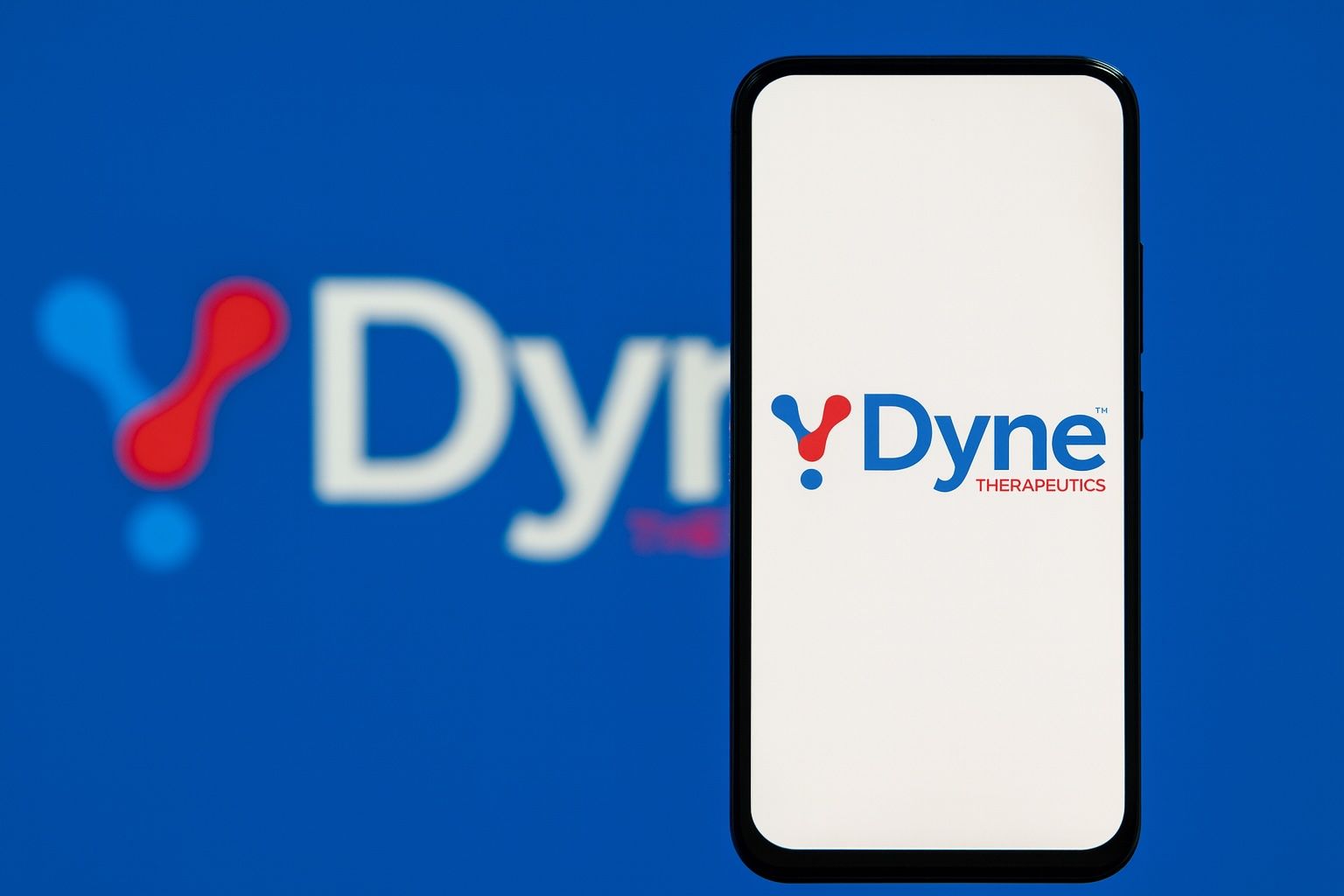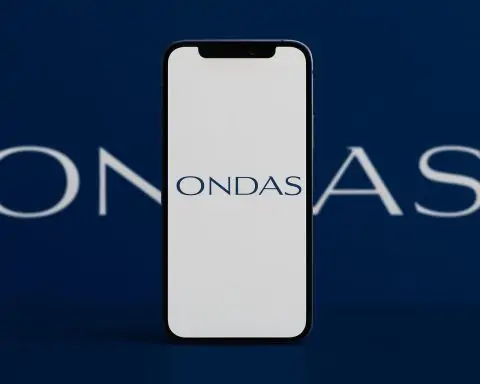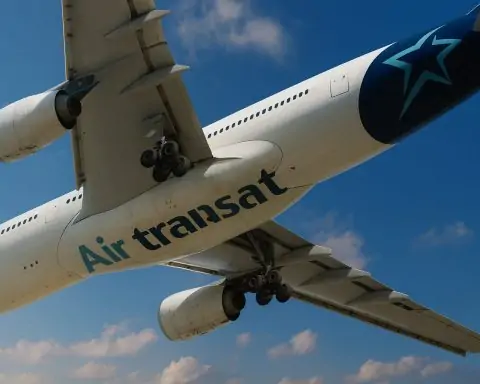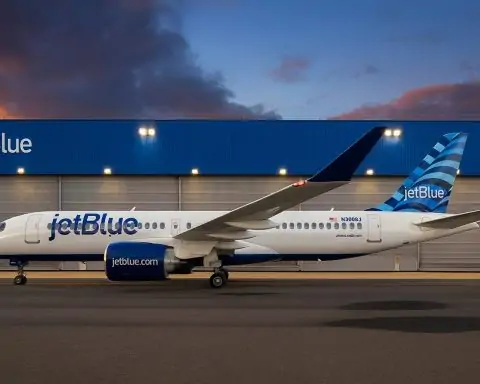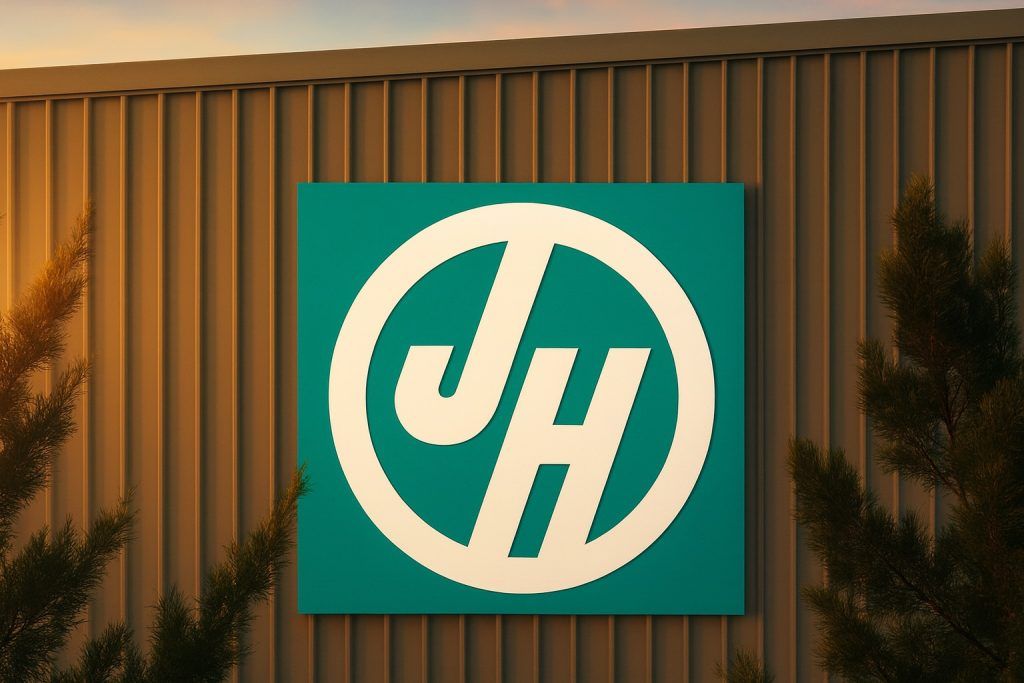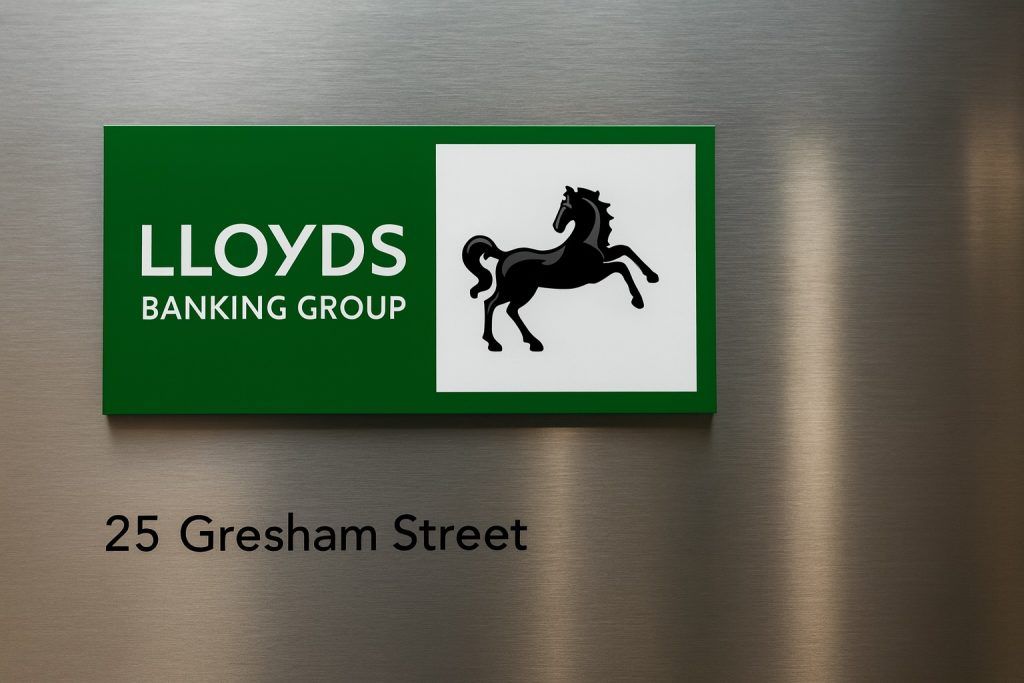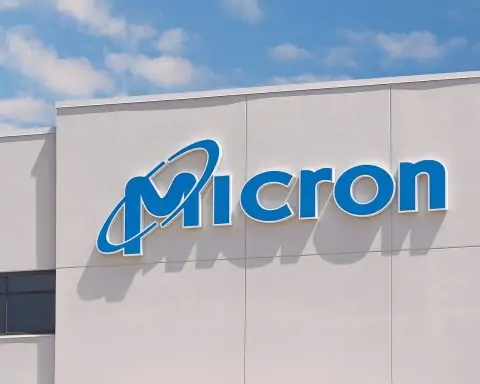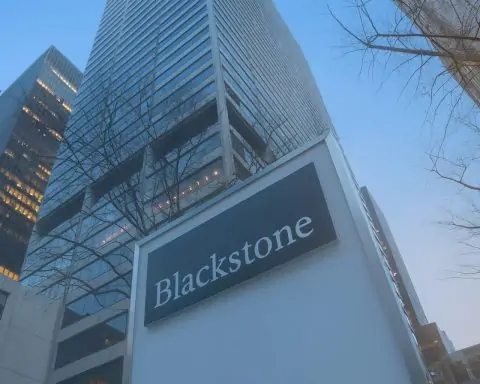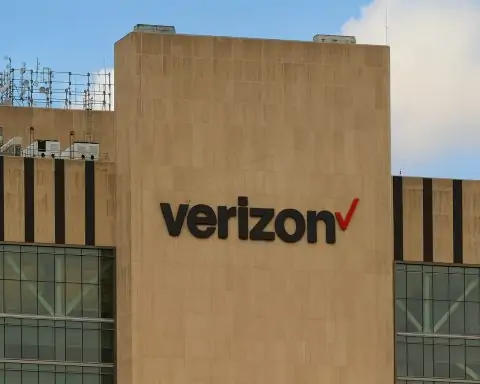- Stock Soars on Trial Results: Dyne Therapeutics (NASDAQ: DYN) shares spiked over 10% today, reaching around $14 after new clinical data showed its lead therapy dramatically improved muscle function with no serious side effects [1] [2]. The stock is up roughly 75% in the past six months, nearly doubling from spring 2025 levels amid a string of positive trial updates.
- Bullish Analyst Calls: Wall Street is overwhelmingly bullish on Dyne. Raymond James just upgraded DYN to “Strong Buy”, citing a “differentiated profile” for Dyne’s Duchenne muscular dystrophy drug versus existing treatments and an “underappreciated” market opportunity [3]. In total ~14 analysts rate Dyne a Buy, with $34+ average price targets (~160% above current levels) [4]. Some targets run as high as $50, reflecting optimism for Dyne’s 2026–2027 prospects.
- Breakthrough Trial Success: Dyne announced one-year data from its Phase 1/2 ACHIEVE trial in myotonic dystrophy type-1 (DM1) showing “clinically meaningful improvements in function and strength” at the highest dose [5] [6]. Patients saw sustained gains in walking, grip strength, and daily function, with no serious treatment-related adverse events reported [7] [8]. An expert investigator said the consistent improvements “increase confidence in the potential of [DYNE-101]” to truly help DM1 patients [9].
- Major Regulatory Milestones: Dyne’s Duchenne muscular dystrophy drug DYNE-251 (for exon 51 mutations) just won Orphan Drug status in Japan, joining U.S. FDA Breakthrough Therapy and other fast-track designations [10] [11]. Dyne reports 18-month trial data showing “sustained functional improvement…with significant dystrophin expression” in Duchenne patients [12]. Pivotal cohort results are due late 2025, keeping hopes high for accelerated approval filings in 2026.
- Cash Runway into 2027: Financially, Dyne is well-fueled for its ambitious timeline. In Q2 2025 it beat earnings expectations (losing $0.97 per share vs. $0.99 expected) [13] and ended June with $683.9 million cash on hand. The company fortified its balance sheet with a $275 million non-dilutive loan and a $230 million equity offering, extending its cash runway to Q3 2027 [14] [15]. “We…believe we are well funded to achieve multiple value-creating milestones including two data readouts…two potential U.S. Accelerated Approval submissions…and the potential launch of DYNE-251 in 2027,” said CEO John Cox [16].
Recent Stock Performance & Surge on Data
Dyne Therapeutics’ stock has been on a tear following its latest clinical breakthroughs. Shares jumped 10–11% intraday on October 7, 2025, after the company reported positive one-year results from a key trial, lifting the stock to about $14.02 by mid-day [17] [18]. This rally builds on a strong upward trend in recent months – the stock traded below $8 in spring 2025, so it has nearly doubled since then. Trading volume actually dipped on the spike (about 331,000 shares vs. a 2.6 million average), indicating the price jolt came on limited activity [19] [20]. Still, the momentum is notable: DYN is hovering near its 52-week highs after a volatile year in which it ranged from as low as ~$6.80 to as high as ~$35 [21] [22]. The 50-day moving average has climbed to ~$12.5, well above the 200-day ~$11.2 [23], reflecting the recent uptrend. At current prices, Dyne’s market capitalization is about $1.8–$2.0 billion [24] [25], a valuation that factors in the company’s clinical-stage status and future potential rather than any revenues (since it has none yet).
Investor sentiment shifted into high gear this week thanks to Dyne’s breakthrough clinical data (detailed below). The stock’s double-digit percentage pop on the news underscores growing optimism that Dyne might be on a path to actual treatments for diseases long considered intractable. It’s worth noting that biotech stocks like DYN can be highly volatile – last year, Dyne’s shares soared over 150% on early trial wins and then slumped after a large financing and mixed data releases [26] [27]. This week’s surge suggests traders see the recent DM1 results as a genuine de-risking event for the company’s lead program. MarketBeat reported the stock had “previously closed at $12.65” and then spiked to $14+, despite trading volume being 87% below normal [28] [29] – a sign that news-driven buyers (not just high volume momentum traders) drove the price. All told, DYN’s year-to-date trajectory has turned positive, and the latest data could mark a turning point in market confidence for this biotech.
Clinical Breakthroughs in DM1 and DMD
Dyne’s value is tied to two flagship programs: one for myotonic dystrophy type 1 (DM1) and one for Duchenne muscular dystrophy (DMD). In early October 2025, Dyne unveiled impressive one-year clinical results from its Phase 1/2 ACHIEVE trial of DYNE-101 (also known as “zeleciment basivarsen”) in adults with DM1. The data, presented at the World Muscle Society Congress, showed that patients on the highest dose (6.8 mg/kg every 8 weeks) experienced “clinically significant and sustained improvements” across multiple functional measures [30] [31]. These included improved muscle strength in both upper and lower limbs, faster walking and mobility (10-meter walk/run and sit-to-stand tests), better hand function (9-hole peg test), and reduction in the hallmark DM1 symptom of muscle stiffness (myotonia) [32] [33].
Crucially, patient-reported outcomes in the trial corroborated these gains – participants reported better ability to carry out daily activities and improvements in DM1-related issues like fatigue, cognition, and sleep disturbances [34] [35]. Both patients and clinicians rated overall disease burden as improved on global impression scales [36]. As Dyne’s Chief Medical Officer Dr. Doug Kerr explained, “Z‑basivarsen was designed to deliver broad functional improvement to patients, and we believe it has the unique potential to mitigate central nervous system-related manifestations of [DM1] such as cognitive impairment, sleep disturbances and fatigue” [37]. An independent trial investigator, Dr. Valeria Sansone, was even more direct about the significance, stating “the data for z‑basivarsen support its potential to bring a wide range of benefits to DM1 patients…in a way that will really matter to them” [38]. She noted the consistency of improvements across endpoints “increases my level of confidence in the potential of z‑basivarsen”, calling the patient-perceived benefits “encouraging” as initial evidence of a broad meaningful effect [39].
Equally important: safety. In the 6.8 mg/kg dose cohort (n=6 for efficacy, and across 56 total patients exposed to that dose in the program), there were no related serious adverse events observed [40] [41]. The drug’s favorable safety/tolerability profile, combined with the functional efficacy signals, positions DYNE-101 as one of the most promising experimental therapies for DM1 to date. This is a big deal – DM1 is a devastating genetic disease with no approved disease-modifying treatments, so these results generated considerable excitement (and likely fed into the stock’s jump). Dyne has already expanded ACHIEVE into a 60-patient registrational cohort (with a revised protocol using video hand-opening time as the primary endpoint for accelerated approval) [42] [43]. Enrollment is expected to complete in Q4 2025, with data in mid-2026 to support a possible Biologics License Application (BLA) filing by late 2026 [44] [45]. In June, the FDA granted Breakthrough Therapy Designation to DYNE-101 for DM1 [46], underscoring the unmet need and the therapy’s potential – a regulatory fast-track status that Dyne believes could help enable an accelerated approval path pending the upcoming cohort results.
On the Duchenne muscular dystrophy front, Dyne is advancing DYNE-251 (a conjugated antisense oligonucleotide targeting exon 51). This program too has delivered encouraging early results. The Phase 1/2 DELIVER trial reported that DYNE-251 led to “unprecedented dystrophin expression and functional improvement” in multiple patient cohorts, according to an earlier company update [47]. Dystrophin is the crucial muscle protein missing in DMD; Dyne’s approach aims to restore it via exon-skipping. By late 2024, Dyne had shown that treated DMD patients were producing significant amounts of dystrophin – a key proof-of-mechanism. Fast forward to 2025, and Dyne announced that Japan’s Ministry of Health, Labour and Welfare granted Orphan Drug Designation for DYNE-251 in September [48]. This came on the heels of 18-month data showing “sustained functional improvement” in DMD boys along with high dystrophin levels [49]. The Japanese orphan status provides benefits like potential 10-year market exclusivity upon approval and development subsidies [50]. It complements DYNE-251’s slew of designations in the West – the drug has already earned FDA Fast Track, Orphan Drug, Rare Pediatric Disease designations, and as of August 2025, FDA Breakthrough Therapy Designation for DMD [51] [52].
Regulators are effectively signaling that DYNE-251, if its promise holds, could be expedited to market. Dyne has fully enrolled a 32-patient pivotal (“registrational”) cohort in the DELIVER trial to firm up efficacy and safety [53] [54]. Data from this cohort are expected in late 2025 [55]. If positive, the company aims for a U.S. accelerated approval submission in early 2026 [56], which could make DYNE-251 one of the first next-generation DMD therapies to follow Sarepta’s earlier exon-skippers. “With orphan drug designation now granted in Japan, complementing existing designations in the U.S. and Europe, DYNE-251 continues to advance as a promising next-generation exon 51 skipping therapy,” said Dr. Doug Kerr, Dyne’s CMO [57].
It’s worth noting that competition in DMD and DM1 is heating up. For DMD exon 51 in particular, Dyne will be measured against Sarepta Therapeutics’ approved exon-skipping drug (Exondys 51) and potentially other gene therapies. However, Raymond James analysts believe Dyne’s candidate could stand out. The firm upgraded Dyne after gaining “increased conviction” that the upcoming DYNE-251 data will show a “differentiated profile” versus Sarepta’s exon-skipping approach, with a clear path to accelerated approval if outcomes hold up [58]. They argue the market has not fully valued how big Dyne’s opportunity could be in the exon 51 DMD population [59]. On the DM1 side, Dyne’s main rival Avidity Biosciences has a somewhat similar RNA therapy (AOC 1001) in trials – which also showed functional benefits but had a serious safety setback in 2022. Dyne’s ability to deliver benefits without safety red flags so far could give it an edge in this first-to-market race for DM1. All told, Dyne’s latest clinical milestones have significantly de-risked its science in the eyes of many observers, even as pivotal trials continue.
Financial Results and Strengthened Balance Sheet
Dyne remains a pre-revenue, clinical-stage biotech, so its financial story is all about cash burn and runway. In the second quarter of 2025, Dyne posted an expectedly large net loss (typical for a biotech in heavy development mode) – -$0.97 EPS for the quarter – but this was actually a slight beat versus consensus expectations of -$0.99 [60]. The company has no product revenue yet, and its R&D expenses have been mounting (for example, one report noted R&D rose to ~$99 million in Q2 2025, from ~$62 million a year prior [61]). These costs reflect multiple clinical trials running in parallel and new cohort initiations. Dyne’s annualized cash burn likely exceeds $200 million now, given the scale of its programs.
To support this, Dyne shored up its finances with major fundraising moves in 2025. It raised $230 million in a public equity offering in July 2025 [62], adding to its cash reserves but diluting shareholders (the offering was upsized and priced after a big stock run-up in May 2024 [63] [64]). More significantly, Dyne secured a $275 million senior secured loan facility from Hercules Capital in June 2025 [65]. This debt deal is “non-dilutive” (doesn’t involve issuing stock) and provided an immediate $100 million upfront, with the remaining $175 million available as Dyne hits clinical milestones [66]. CEO John Cox said the Hercules partnership “enhances [Dyne’s] financial positioning” as it advances toward pivotal milestones, noting the non-dilutive capital allows Dyne to push its DM1 and DMD programs through potential approvals in 2026 [67] [68].
As a result of these raises, Dyne’s cash stockpile was roughly $684 million as of June 30, 2025 [69]. The company projects this is sufficient to fund operations through the third quarter of 2027 [70] – well past the anticipated 2026 regulatory filings and even beyond a first commercial launch in 2027, if all goes well. “We…extended our cash runway into Q3 2027 and believe we are well funded to achieve multiple value-creating milestones,” CEO Cox emphasized, listing two major data readouts (DM1 & DMD), two accelerated approval submissions, and a potential U.S. launch among the targets on the horizon [71].
This strong balance sheet is a notable de-risking factor for investors. It means Dyne should not need to return to the equity markets for additional cash in the immediate term (barring unexpected developments), avoiding further dilution. The loan does add debt (debt-to-equity ratio is modest at 0.17 so far [72]), but the structure ties extra tranches to success milestones, aligning the lender’s interests with the company’s progress [73] [74]. Of course, a biotech like Dyne will likely continue burning cash until a drug approval and commercial revenue stream materializes. Its free cash flow was around -$222 million recently [75] [76], and accumulated deficits will grow in the next couple of years. However, Dyne’s management has proactively raised capital at opportune times (such as after stock surges on good news) to ensure the company can see its trials through. The current cash runway to 2027 suggests Dyne can reach that critical inflection of launching a product (their goal: DYNE-251 launch by early 2027) without a cash crunch. This financial stability is a key positive noted by bullish analysts amid the inherent risks of clinical development.
Analyst Commentary and Market Sentiment
Analysts covering Dyne Therapeutics have, for the most part, struck an optimistic tone, especially following recent developments. According to a compilation by DirectorsTalk, the sentiment is “overwhelmingly positive” – with 14 analysts rating DYN a Buy and only 2 a Hold, and no outright Sell ratings [77]. Price targets range widely from about $9 on the low end to $50 at the high end, but cluster in the $30s, with the average around $34–$35 per share [78]. That implies over 170% upside from the ~$12–$14 levels the stock has traded at recently [79]. In other words, many on Wall Street clearly see Dyne as a potential multi-bagger if its drugs succeed. “Dyne Therapeutics is a compelling choice for investors interested in biotech’s potential to deliver transformative therapies…[though] inherent risks…are significant,” one analysis noted, highlighting that the positive analyst outlook and substantial upside potential make Dyne a stock to watch closely [80].
Several firms have reiterated or adjusted their views in light of Dyne’s progress. As mentioned, Raymond James upgraded the stock on August 25, 2025, raising the target to $35. RJ’s biotech analyst Martin Auster expressed “increased conviction” ahead of the late-2025 DYNE-251 readout, arguing Dyne’s DMD data could surprise to the upside and that the exon-skipping therapy’s value isn’t fully reflected in the stock [81]. He specifically expects DYNE-251 to differentiate itself from Sarepta’s Exondys 51, and he sees a plausible path to U.S. approval given the strength of early results [82]. Similarly, Guggenheim and HC Wainwright have issued very bullish targets in the $45–$50 range in the past, betting that both the DM1 and DMD programs will hit key milestones [83] [84].
On the other hand, there are a few tempered voices. In August, Oppenheimer – while maintaining an “Outperform” rating – slashed its price target from $34 down to $13 [85]. The firm noted that at around a $1.5 billion market cap, Dyne’s valuation already prices in a good deal of success in DM1 and DMD, so upside may be more incremental if there are any hiccups [86]. Oppenheimer’s cautious stance reflected some specific concerns: they “acknowledge a real treatment effect” with DYNE-101 in DM1, but are wary that the ACHIEVE trial’s modified design (60 patients) is trying to “thread the needle” on statistical power [87]. For DMD, they lauded the robust dystrophin expression seen so far, but warned that upcoming data “could be complicated by potential safety signals” (perhaps alluding to class-wide safety issues seen in other RNA therapies) [88]. Moreover, Oppenheimer pointed out that timelines and regulatory clarity are key overhangs – Dyne’s aggressive plan to file BLAs in 2026 assumes everything goes right on schedule [89]. They also remarked that both the DM1 and DMD fields are “crowded…with several emerging players”, which could limit Dyne’s eventual market share even if approved [90]. This perspective underscores that, despite Dyne’s excellent start, competition (from companies like Avidity, Sarepta, PepGen, etc.) and execution risks still loom.
Overall, market sentiment on Dyne has swung positive with the recent news. The stock’s strong rally indicates that investors are rewarding clinical progress and increasingly pricing in Dyne’s upside scenario. The analyst community’s consensus of a “Moderate Buy” (or better) and lofty price targets reflects genuine excitement about Dyne’s platform and the sizeable patient populations it could serve. Neuromuscular diseases like DM1 and DMD represent multi-billion dollar market opportunities if a disease-modifying therapy comes to fruition. At the same time, the divergence in price targets (single-digits to $50) highlights the binary nature of biotech: if trials falter or delays occur, the downside is real, but if Dyne delivers on the promise of its FORCE platform, the stock could have massive upside.
For now, Dyne appears to have the wind at its back. “The broader outlook remains compelling,” as one stock analysis put it [91] [92]. Investors will be closely watching upcoming catalysts – especially the late-2025 DYNE-251 data from the DMD trial and the mid-2026 DYNE-101 pivotal data in DM1. Positive outcomes there, followed by regulatory filings, could validate years of research and set the stage for Dyne’s first commercial launch in 2027. Conversely, any unexpected safety issues or efficacy shortfalls could dampen the bullish mood quickly. As a clinical-stage biotech, Dyne remains a high-risk, high-reward story, but recent developments have significantly tilted the odds in its favor. With a bolstered balance sheet, enthusiastic expert endorsements, and patients desperately in need of solutions, Dyne Therapeutics has emerged as a standout contender in the race to conquer muscular dystrophies.
Sources: Recent market data and trading info from MarketBeat [93] [94]; press releases via GlobeNewswire/Yahoo Finance [95] [96] [97]; analyst commentary from The Fly/TipRanks [98] [99]; and aggregated financial/consensus data from Yahoo Finance and DirectorsTalk [100] [101].
References
1. www.marketbeat.com, 2. www.stocktitan.net, 3. www.tipranks.com, 4. www.directorstalkinterviews.com, 5. www.stocktitan.net, 6. www.stocktitan.net, 7. www.stocktitan.net, 8. www.stocktitan.net, 9. www.stocktitan.net, 10. www.nasdaq.com, 11. www.stocktitan.net, 12. www.stocktitan.net, 13. www.marketbeat.com, 14. www.quiverquant.com, 15. www.biospace.com, 16. www.biospace.com, 17. www.marketbeat.com, 18. www.marketbeat.com, 19. www.marketbeat.com, 20. www.marketbeat.com, 21. www.directorstalkinterviews.com, 22. www.directorstalkinterviews.com, 23. www.marketbeat.com, 24. www.directorstalkinterviews.com, 25. www.marketbeat.com, 26. finviz.com, 27. finviz.com, 28. www.marketbeat.com, 29. www.marketbeat.com, 30. www.stocktitan.net, 31. www.stocktitan.net, 32. www.stocktitan.net, 33. www.stocktitan.net, 34. www.stocktitan.net, 35. www.stocktitan.net, 36. www.stocktitan.net, 37. www.stocktitan.net, 38. www.stocktitan.net, 39. www.stocktitan.net, 40. www.stocktitan.net, 41. www.stocktitan.net, 42. www.biospace.com, 43. www.biospace.com, 44. www.biospace.com, 45. www.biospace.com, 46. www.biospace.com, 47. finviz.com, 48. www.nasdaq.com, 49. www.stocktitan.net, 50. www.stocktitan.net, 51. www.clinicaltrialvanguard.com, 52. www.stocktitan.net, 53. www.biospace.com, 54. www.biospace.com, 55. www.biospace.com, 56. www.biospace.com, 57. www.nasdaq.com, 58. www.tipranks.com, 59. www.tipranks.com, 60. www.marketbeat.com, 61. www-web.itiger.com, 62. www.stocktitan.net, 63. finviz.com, 64. finviz.com, 65. www.quiverquant.com, 66. www.quiverquant.com, 67. www.quiverquant.com, 68. www.quiverquant.com, 69. www.stocktitan.net, 70. www.biospace.com, 71. www.biospace.com, 72. www.marketbeat.com, 73. www.quiverquant.com, 74. www.quiverquant.com, 75. www.directorstalkinterviews.com, 76. www.directorstalkinterviews.com, 77. www.directorstalkinterviews.com, 78. www.directorstalkinterviews.com, 79. www.directorstalkinterviews.com, 80. www.directorstalkinterviews.com, 81. www.tipranks.com, 82. www.tipranks.com, 83. www.tipranks.com, 84. finviz.com, 85. www.tipranks.com, 86. www.tipranks.com, 87. www.tipranks.com, 88. www.tipranks.com, 89. www.tipranks.com, 90. www.tipranks.com, 91. www.directorstalkinterviews.com, 92. www.directorstalkinterviews.com, 93. www.marketbeat.com, 94. www.marketbeat.com, 95. www.stocktitan.net, 96. www.stocktitan.net, 97. www.nasdaq.com, 98. www.tipranks.com, 99. www.tipranks.com, 100. www.directorstalkinterviews.com, 101. www.biospace.com
